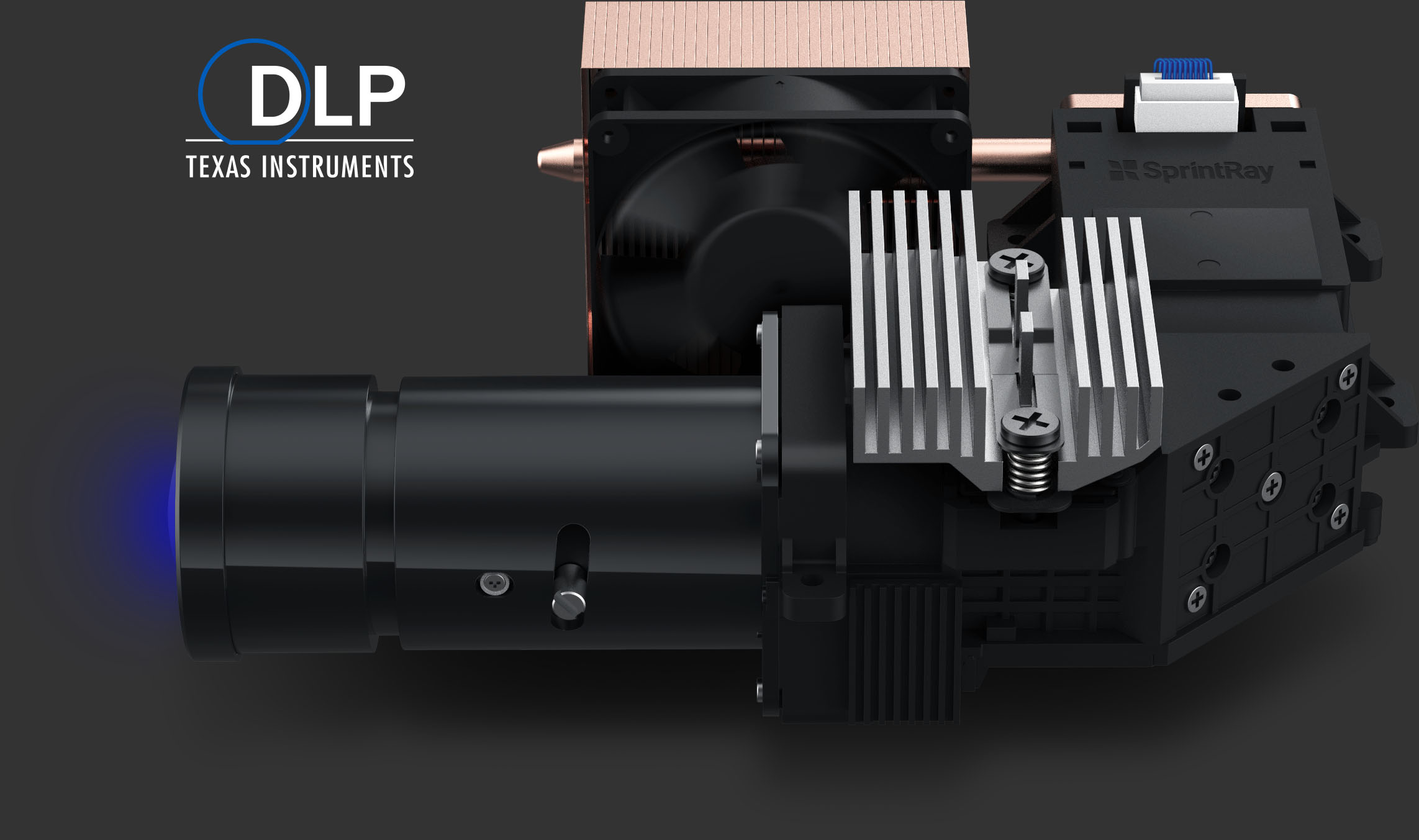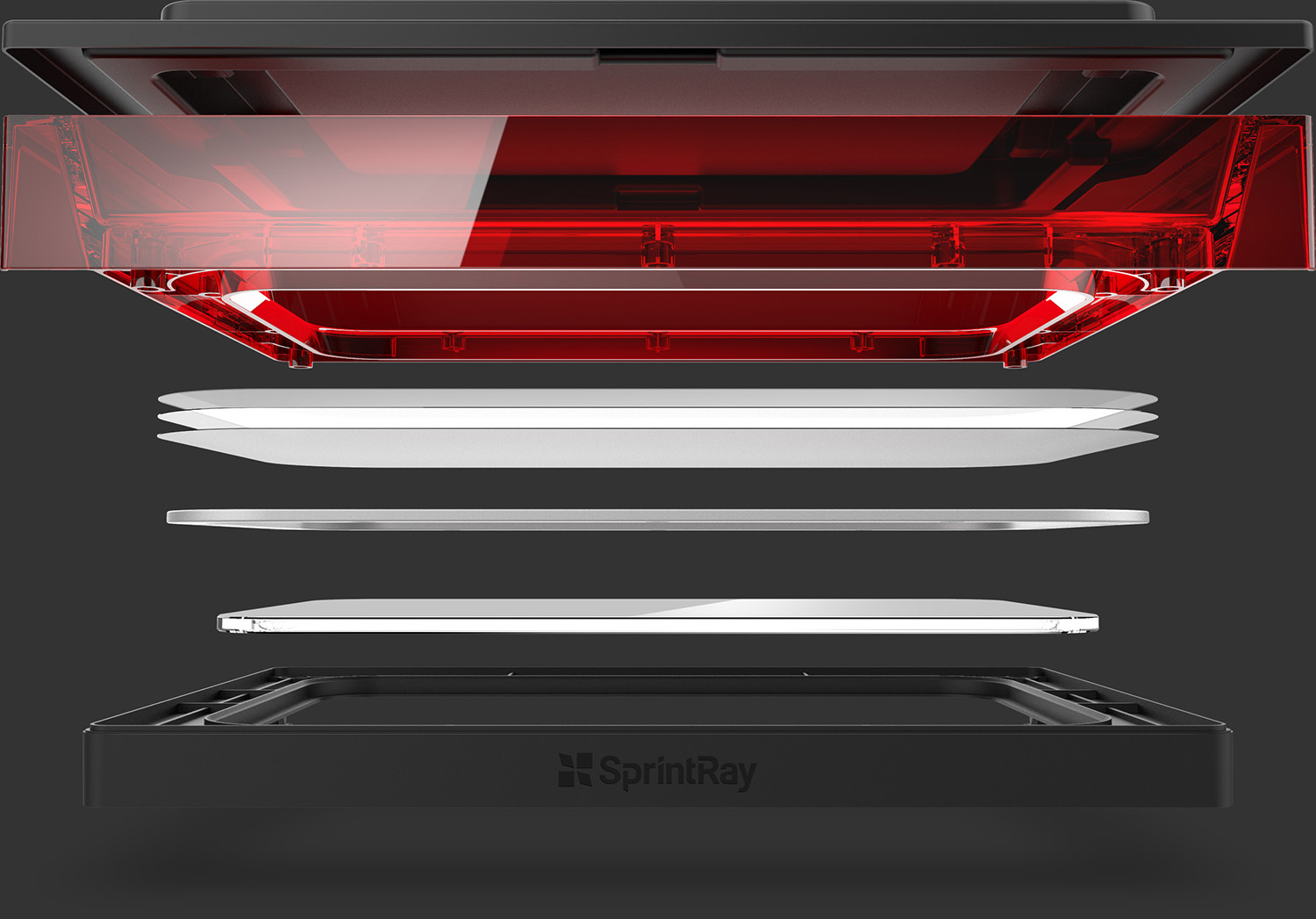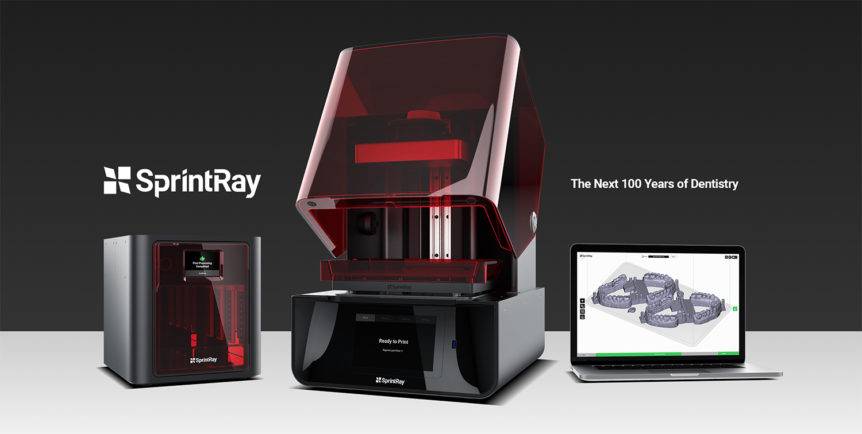Californian dental 3D printer manufacturer SprintRay has introduced the Pro95 desktop 3D printer. A successor to the MoonRay S Digital Light Processing (DLP) machine, the Pro has over double the print capacity. The Pro also includes a new, cloud-connected software suite which predicts problems, automates workflows and reduces the learning curve of the machine. Amir Mansouri, CEO of SprintRay, said:
“We’re grateful for all of the support and feedback we’ve received from our customers since we introduced the MoonRay S to the dental industry. All of that input went into designing and building the most functional and dentist-friendly 3D printer the industry has yet seen.”
Desktop digital dentistry
The Pro is integrated with a custom DLP projector which decreases curing times using high-intensity light. As such, a new Dynamic Light Control function is used to adjust light intensity for each 3D printed layer, improving accuracy and efficiency. Also contributing to part accuracy, is a self-monitoring, heated tank which is designed to maintain liquid resin at the correct temperature.
The Pro95 has a print volume of 190 x 100 x 200 mm, facilitating the packing of multiple dental appliance designs such as surgical guides, night guards, and up to 21 dental arches in a single build. SprintRay Software, which recently added 3Shape’s Implant Studio, and its automated capabilities have been updated for the Pro. New features of the software create the ability to convert intraoral scans into 3D printable files.

The SprintRay STEM Tank
SprintRay has also introduced its proprietary Selectively Textured Elastomeric Membrane (STEM) Tank technology in the Pro95. The STEM Tank creates air between the resin and tank floor to minimize adhesion. Elastic displacement is then used to separate the print from the tank floor. As a result, a 3D printed part is produced with greater speed while decreasing the risk of failure.
Moreover, a magnetic lock on the build platform is featured to ensure a perfect build plate orientation. For safety, a second magnet senses when the lid is open, reducing the risk of exposing resin to ambient light.

Source: 3dprintingindustry


